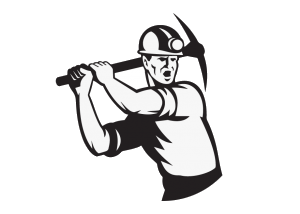Four ways banks are using blockchain
Introduction (In reference to ft.com/)




Barely a day goes by without a fresh announcement about how banks are seeking to use blockchain technology to transform sizeable chunks of their business.
Combining shared databases and cryptography, blockchain technology allows multiple parties to have simultaneous access to a constantly updated digital ledger that cannot be altered. The technology, which underpins cryptocurrencies such as bitcoin, was initially treated with skepticism by banks. However, this has changed dramatically.
Blockchain is the hottest buzzword in the sector, even if the recent flurry of cryptocurrency fundraising via “initial coin offerings” is attracting intense regulatory scrutiny. Blockchain firms raised more than $240m of venture capital money in the first six months of 2017, much of it from banks, including $107m raised by R3, the New York firm owned by 40 of the world’s biggest lenders. That follows an almost doubling of venture capital investment in blockchain firms last year to $367m, according to KPMG’s Pulse of Fintech Q2 report. Many of the new ventures by banks involve them setting up a consortium of like-minded companies or carrying out a “proof of concept” to test the potential of the new technology.
In almost all cases there is little to show in terms of commercial significance. So which the areas of banking stand a serious chance of being transformed by blockchain? The Financial Times has spoken to almost a dozen bankers, consultants and analysts to come up with five areas of the industry most likely to see an effect.
Main idea
Clearing and Settlements

It is not the sexiest area of banking, but the tangled web that records loans and securities costs investment banks billions of dollars to run. Accenture has estimated that the biggest investment banks could save $10bn by using blockchain technology to improve the efficiency of clearing and settlement. Richard Lumb, head of financial services at the consultancy, says: “The first place we will see it have an impact is clearing houses, such as Deutsche Börse, the Australian Stock Exchange and Depository Trust & Clearing Corporation [DTCC].” He adds: “Today it is managed through a myriad of messages and manual reconciliation.
There is a big opportunity for blockchain to seriously restructure that industry.” One of the best-known examples of this restructuring is the Australian Securities Exchange, which aims to shift much of its post-trade clearing and settlement on to a blockchain system. The project is being implemented by Digital Asset Holdings, the company led by Blythe Masters, the former senior executive with JPMorgan Chase.
In the US, DTCC is working with IBM, R3 and Axoni to shift post-trade clearing of single-name credit default swaps on to a blockchain system by the end of next year. If this goes well, the plan is to do the same with other derivatives processed by the giant US clearing house.
There are many different projects but Stuart Graham, chief executive of financial analysis company Autonomous Research, believes the industry will coalesce around one solution. “Over the next couple of years, as the winning tool becomes clear you will see the whole industry line up behind up it,” he says. “It is in none of their interests to keep all the bureaucracy and inefficiencies of the current back-office set-up.”
Funds distribution
Payments

Central banks across the world are exploring the potential for shifting parts of their payments systems on to blockchain technology or even using it to launch digital currencies. This is partly a response to the challenge that standalone cryptocurrencies such as bitcoin could pose to their control of monetary policy. It also underlines how central bankers are waking up to the potential benefits of the technology for the payments system.
“Everyone is looking at it, experimenting and waiting to see who moves first,” says Simon Whitehouse at Accenture. “There is a great complexity involved to put in a new payments infrastructure with enough players to make it worthwhile.”
Commercial banks, meanwhile, are growing tired of waiting for central bankers to take the lead and are pressing on with their own projects. Switzerland’s UBS has come up with the ” utility settlement coin”, which aims to create a digital currency for use in financial markets by issuing tokens convertible into cash on deposit at central banks. “We accept that it will be quite a few years before central banks could be in the position of issuing their own digital currencies, so therefore we would look for them to be issued via an alternative means and yet be able to still retain settlement finality because they are assets backed by funds at a central bank,” says Lee Braine in the chief technology office of Barclays’ investment bank, which is working with UBS on the project. In the field of cross-border payments there is an increasingly bitter tussle under way.
On one side is Swift, the bank-owned messaging system used to send trillions of dollars worth of payments, and on the other a growing number of firms aiming to use blockchain technology to cut costs and time, led by Ripple in San Francisco. Swift is experimenting with blockchain technology but its rivalry with Ripple remains intense. Ripple has arranged a conference in Toronto for October 16-18, with former Federal Reserve chairman Ben Bernanke as its keynote speaker, that clashes with Swift’s Sibos event at the same time and in the same city; it is a clear case of an upstart parking its tanks on the incumbent’s lawn.
Trade finance

Trade finance is still mostly based on paper, such as bills of lading or letters of credit, being sent by fax or post around the world, and seems to many bankers to be crying out for modernization. Many believe that blockchain is the obvious solution especially as numerous parties need access to the same information.
“It is literally Dickensian, because it is so paper-based,” says Mr Whitehouse at Accenture. “This is a very important element of the supply chain and blockchain can offer a vast amount of elements in this area. For instance, if you are shipping goods from China, as many as 50 people need to access the data.”
Charley Cooper, managing director of R3, says: “Trade finance is an obvious area for blockchain technology. It is so old it’s done with fax machines and you need a physical stamp on a piece of paper.”
Banks will be unable to achieve blockchain benefits, however, if they act alone, experts say. “It could take you a day to ship oil from Singapore to Malaysia and a week to deal with a the paperwork,” says Vivek Ramachandran, head of innovation for commercial banking at HSBC, the world’s largest trade finance provider. “Digitising trade finance is quite a pointless exercise — you need to digitise trade.” He says: “You have to include not only the shipping companies, the agents and the freight providers, but also the ports, the customs and the insurers,” says Mr Ramachandran. “The moment you need a physical stamp on a document, it can’t be digital. This has to be ecosystem driven.”
There are several start-ups working to digitize the bill of lading process, such as Wave of Israel, EssDocs of Malta and Bolero of the UK. Mr Ramachandran predicts that it will take five years to digitize entire trade ecosystems, such as sugar or energy, but blockchain technology has the potential to be “genuinely game changing”.
Identity

Verification of customers and counter-parties is a vital for banking. Without it, lenders would quickly lose their roles as trusted guardians of people’s money. Regulators hold banks responsible for checking that customers are not criminals or illicit actors, and fine them if they get it wrong.
Banks have been trying for years to set up a shared digital utility to record customers’ identities and keep them updated. They have failed to find the right formula, undone by conflicting demands and the problem of deciding liability.
Some believe that blockchain could offer a solution because of its cryptographic protection and its ability to share a constantly updated record with many parties. “We think identity could be big,” says Mr Whitehouse at Accenture, which recently worked with the UN and Microsoft on a blockchain identity system for people with no identity papers. “We can easily see how you could move this to the massive area of ‘know your client’ and anti-money laundering, where the costs are huge for banks and the costs of messing it up are also huge.”
Dozens of start-ups are working on building blockchain systems for customer identification, including Cambridge Blockchain, Tradle, Credits and Blockstack. Identity is also a central part of R3’s efforts to build Corda, its blockchain-based operating system for banks. “Identity is a core component,” says Mr Cooper. “If you haven’t solved identity then the blockchain doesn’t work on any application. Imagine building a ledger and you don’t know who is on the ledger.”
Category: Blockchain



